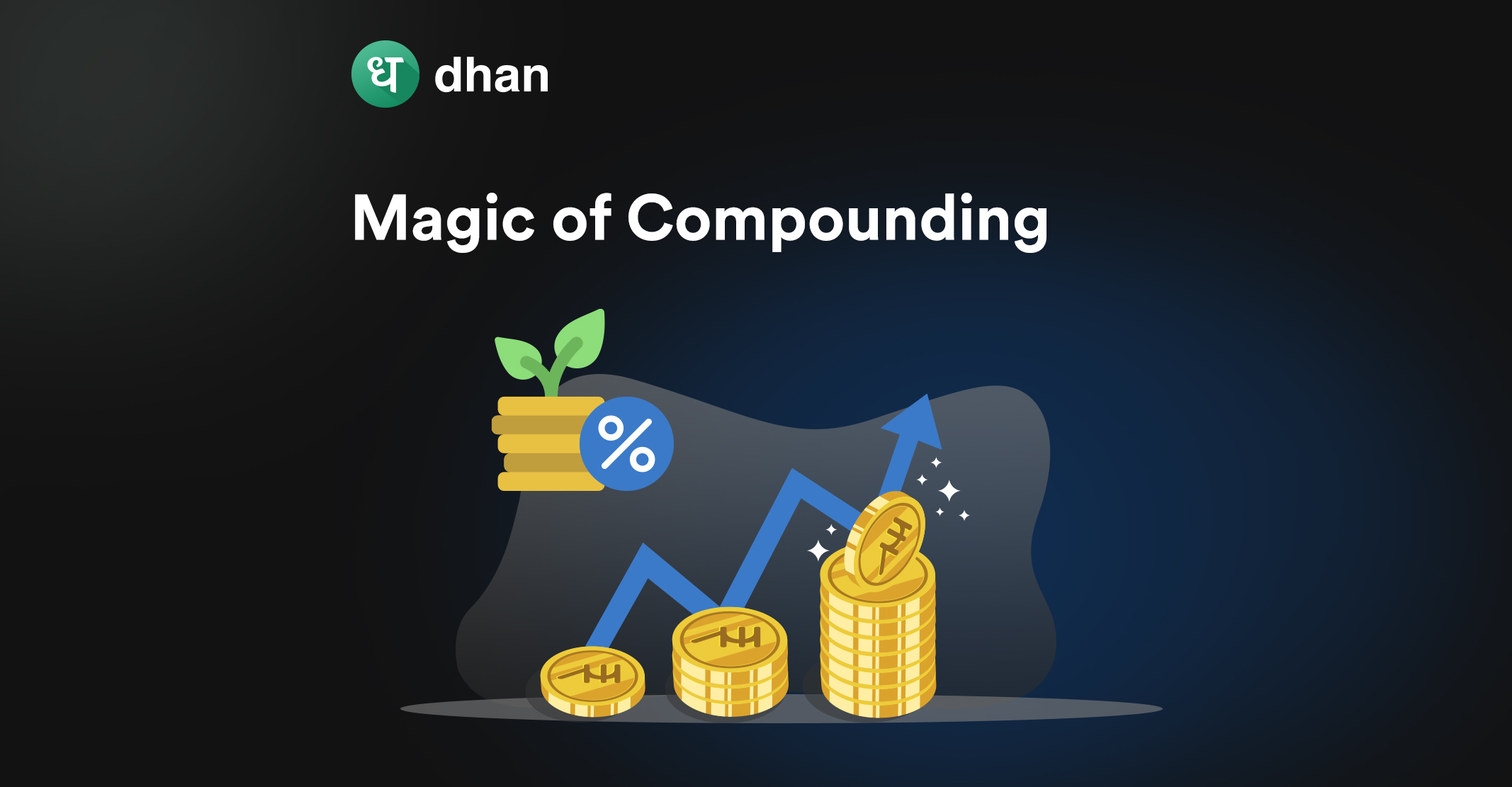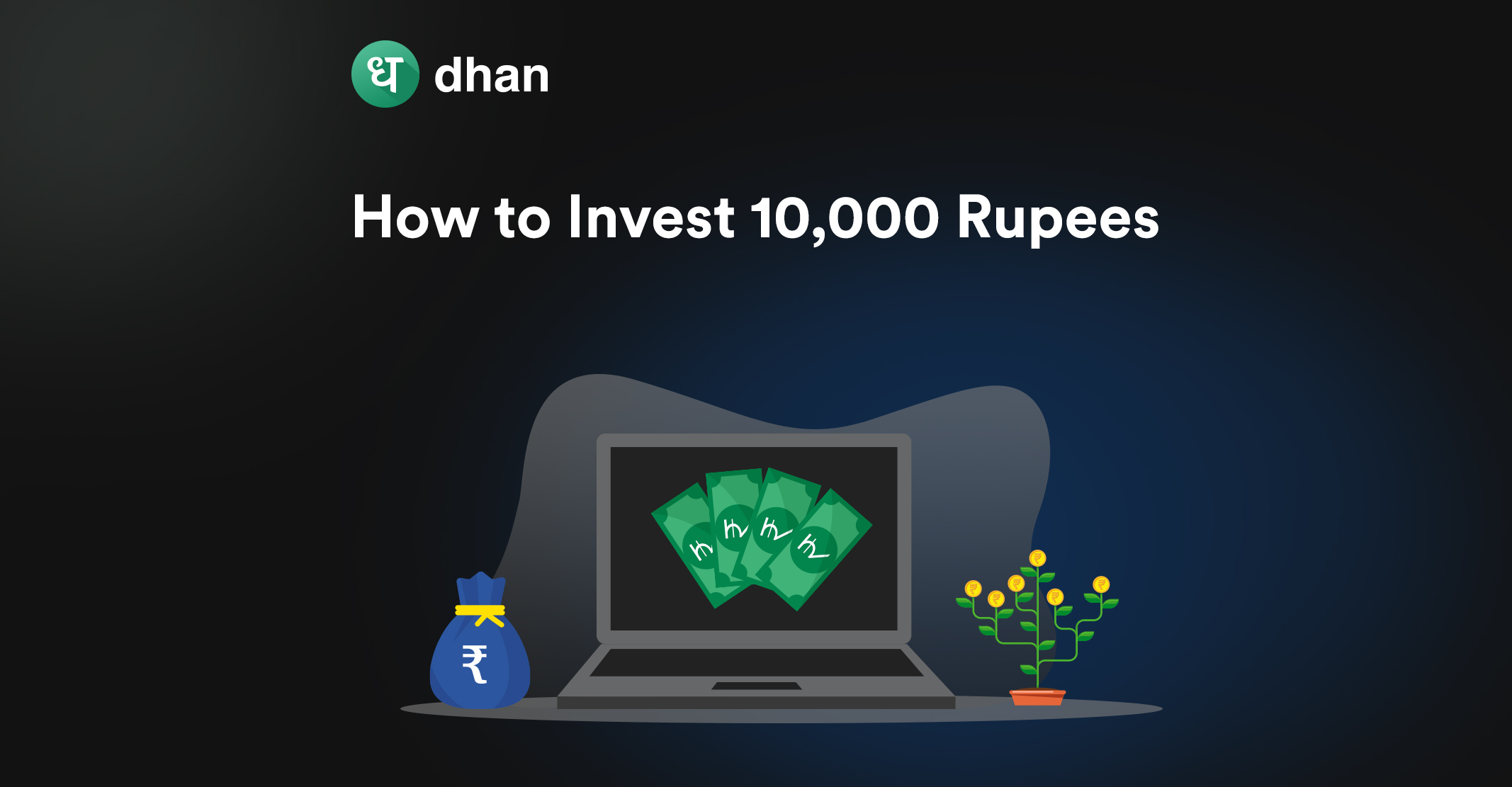Ever wondered how your mutual fund or stock investment grows multiple times over a long period? The answer is the magic of compounding.
Compounding applies to investments wherein the return on the initial capital is reinvested to earn even more returns.
Let’s deep dive into what the magic of compounding is, and how it works in the real work of mutual fund investing.
What is the Magic of Compounding?
The magic of compounding is the concept of earning returns on the invested capital as well as the returns or interest generated by that investment. Simply put, your returns will earn returns on top.
Mutual funds, stocks, ETFs, bonds, and many other types of investments allow investors to unlock the magic of compounding. However, you need to give compounding time to work its magic. It doesn’t happen overnight.
The longer you let your investment compound, the more returns you stand to earn in the pursuit of goals such as financial freedom. Staying invested for longer allows your money to work in tandem with compounding.
The earlier you start, the better your chances of earning more compound returns. This, in turn, can help you achieve your goals, like creating a passive income source for post-retirement life.
Example of the Magic of Compounding
Compound interest can be calculated using a mathematical equation. After all, online investing is all about numbers and mathematics.
The formula helps you find the final sum you are likely to get in return from your invested capital.
Let’s take an example by comparing two forms of interest: simple and compound.
If an asset like certain types of bonds pays simple interest, then you will earn the interest on the initial principal amount and not on the previous returns. So, the interest income always remains the same.
The formula for the final amount in the case of simple interest will be:
F = P (1+rt)
Where,
F is the total future amount
P is the principal amount invested
r is the yearly rate of interest
t is the number of years for which the money remains invested
Example of Simple Interest
Your principal invested amount is ₹50,000 in the ABC mutual fund.
The yearly rate of interest is 8%.
The period of investment is 6 years.
The final amount that you can get will be calculated by following these steps:
F = P (1+rt)
F = ₹50,000 X (1 + 0.08 X 6)
F = ₹50,000 X (1 + 0.48)
F = ₹50,000 X 1.48
Future amount = ₹74,000
After 6 years, you will get ₹74,000 from this investment if it earns only simple interest.
So, if you invest in an asset that pays you compound interest for the same period, then you can create a higher corpus.
Now, let’s move to the magic of compounding, for which, you need to know its formula:
F = P X [1 + r/n]^(nt)
Where,
F is the total future amount
P is the principal amount invested
r is the yearly rate of interest
n is the number of times interest is compounded within a year
t is the number of years for which the money remains invested
Example of Compound Interest
- Your principal invested amount is ₹50,000 in the ABC mutual fund
- The yearly rate of interest is 8%
- The interest is compounded annually
- The period of investment is 6 years
The final amount that you can get will be calculated by following these steps:
F = P X [1 + r/n]^(nt)
F = ₹50,000 X (1 + 0.08/1)^(1*6)
F = ₹50,000 X (1.08)^(6)
F = ₹50,000 X 1.5868
Future amount = ₹79,343.71
Hence, after 6 years, you will get approximately ₹79,344 from this investment.
As you can see, between simple interest and compound interest, the difference in return comes at Rs. 5,344. That’s the miracle of compounding.
How to Use a Compound Interest Calculator
There are tools like the compound interest calculator that do the math for you. These tools are readily available, such as the one on our website.
You can calculate the compound interest returns on different instruments beforehand and decide which one to invest based on the returns.
For example, if you want to invest ₹20,000 in XYZ mutual fund for a tenure of five years which is expected to give 6% interest.
The inputs that you have to enter into the compound interest calculator are as follows:
- The principal amount is ₹20,000
- The rate of interest (p.a.) is 6%
- The time period (in years) is 5
The results that you will get in a split second without the hassle of calculating this manually are as follows:
- The estimated return is ₹6,765
- The total value is ₹26,765
Impact of Time on Compounding
The impact of time on compounding is very much present which can be understood with an example.
Suppose that you are investing in the ABC mutual fund that is giving the same returns but here your investment period will go to eight years.
Then the final amount that you can get in this case would be:
F = P X [1 + r/n]^(nt)
F = ₹50,000 X (1 + 0.08/1)^(1*8)
F = ₹50,000 X (1.08)^(8)
F = ₹50,000 X 1.8509
Future amount = ₹92,546.51
Hence, you will get approximately ₹92,547 after eight years. It means that you will be able to earn extra earnings of ₹13,203.
How to Get Rich with the Power of Compounding?
Getting rich doesn’t happen overnight. It takes time, patience, and above all – the right assets.
1. Choose the Right Investment
Start by choosing a high-quality asset to help grow your money. Go beyond “tips” and do your own deep research to identify what can work.
Keep doing it again and again because you need to diversify your investments within and across asset classes. Consistency is name of the game, and stock SIPs and mutual fund SIPs are your friend.
2. Be Patient and Let It Grow
Give your money time to grow. The longer you leave your investment alone, the more access it has to the power of compounding. Don’t stress about short-term changes in your investments.
3. Reinvest Your Earnings
Instead of spending the money you make from your investments, put it back into them.
This option is available via assets like growth mutual funds which can help your money grow faster and stronger.
The value of time for compounding can’t be stressed enough – the real magic of compounding is that it turns small, patient investments into substantial wealth over time.
So, choose wisely, be patient, and let compounding work its financial wonders for you!
Conclusion
The magic of compounding is the phenomenon of earning compound interest on invested capital and the returns themselves.
The longer the period of investment, the more benefit you can get from the power of compounding.
What you need to know is that compounding works only when fundamentally sound assets are chosen for the long term.



